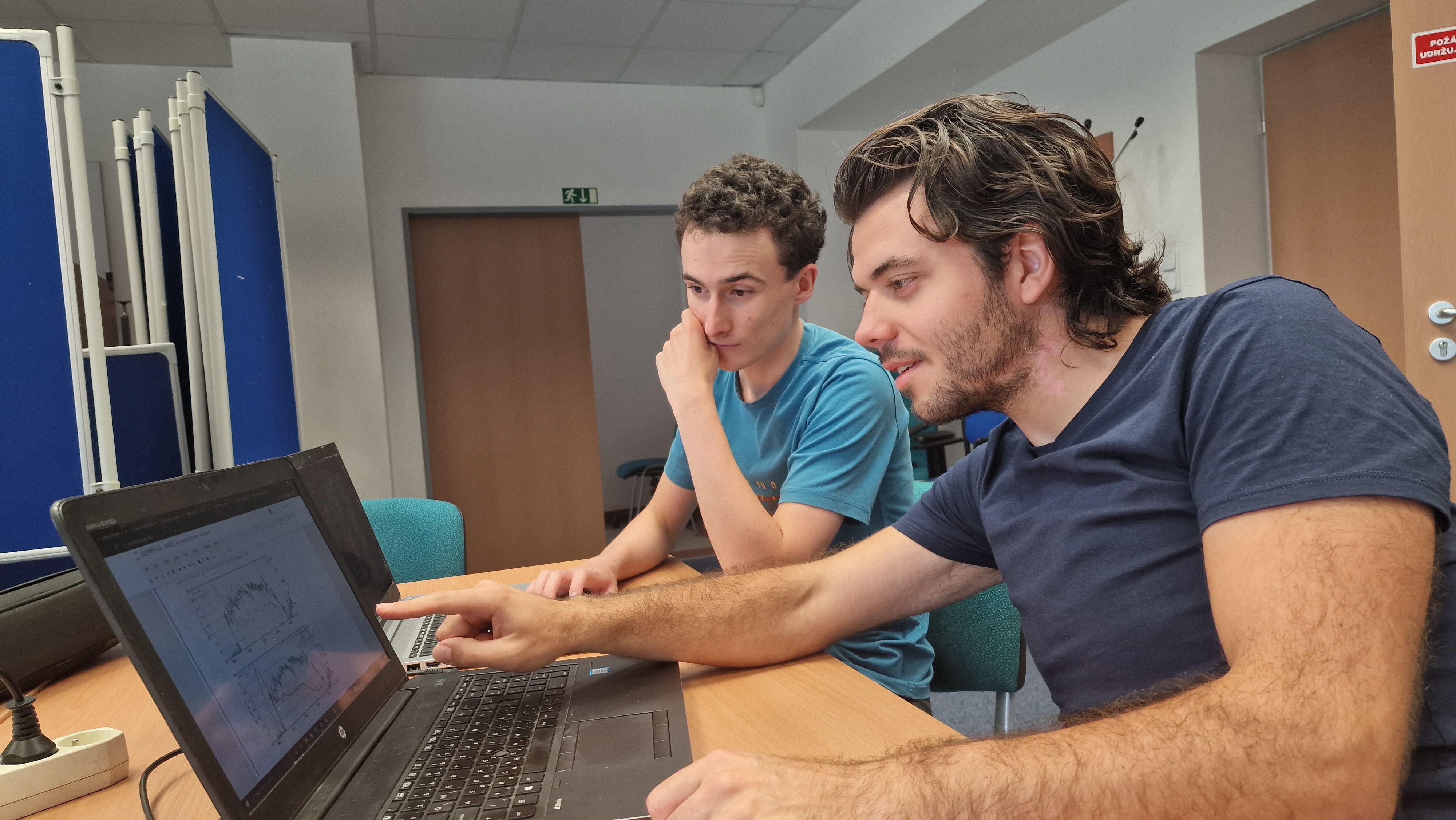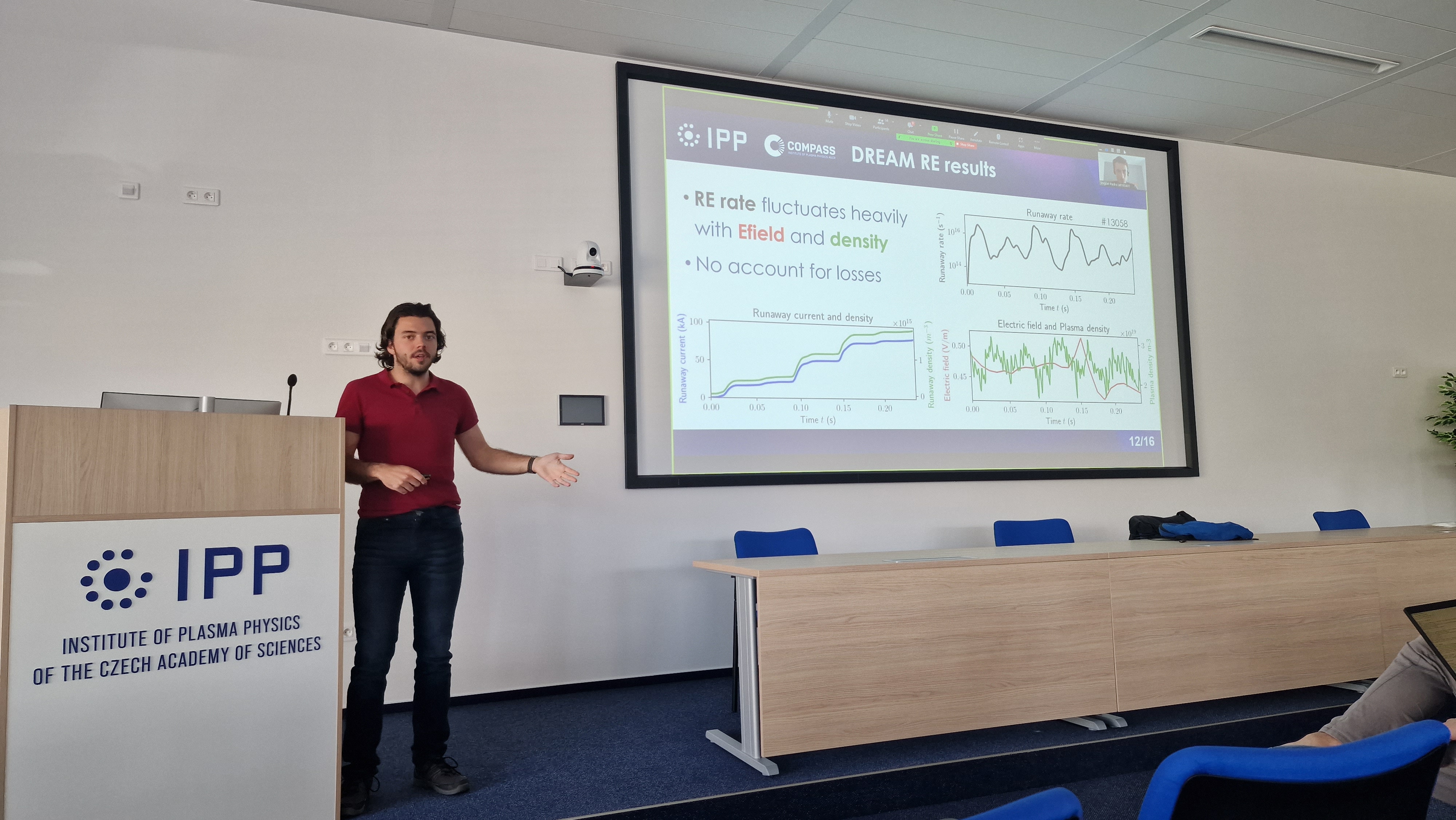During SUMTRAIC 2022 in Prague, after an introduction on the first day, to the Compass tokamak and the Institute of Plasma Physics, I started working on a project with a Portuguese student called Miguel. First, we worked on processing data from the EMTRAIC 2016, successfully reproducing that teams findings about the density dependence of runaway electron generation. I coded, among others, the data I/O script, and it was really important for me that we are able to just call that function, just with a shotnumber, and it outputs the just the data we need - the electric field, density and temperature in the flattop region - just in the format we need it in. This way, processing more than forty shots, and seeing their connections can be very quick.
After confirming the experimental findings, we tried to model the shots using the DREAM runaway generation modelling code developed in Chalmers, first running it prescribing the average density and electric field of the shots flattop region. After several iterations, we settled on prescribing the time dependent density, using the interferometry system, and the time dependent electric field, using the derivative of the magnetic flux. At this point, my script turned out to be really useful, and with it, I could produce a similar script: we could set up the DREAM code with the exact time dependent parameters of a certain shot, entering only the shotnumber - which sped up our analysis substantially.
With the simulations, we could reproduce the experimental results, the runaway generation decreases with the density, but if we compare the experimental and simulation results shot by shot, we could not find a direct connection, most likely due to the simplicity of our geometry (zero dimensional), neglection of the losses, the constant temperature, and not accounting for the runaway generation at the beginning and end of the discharge.


